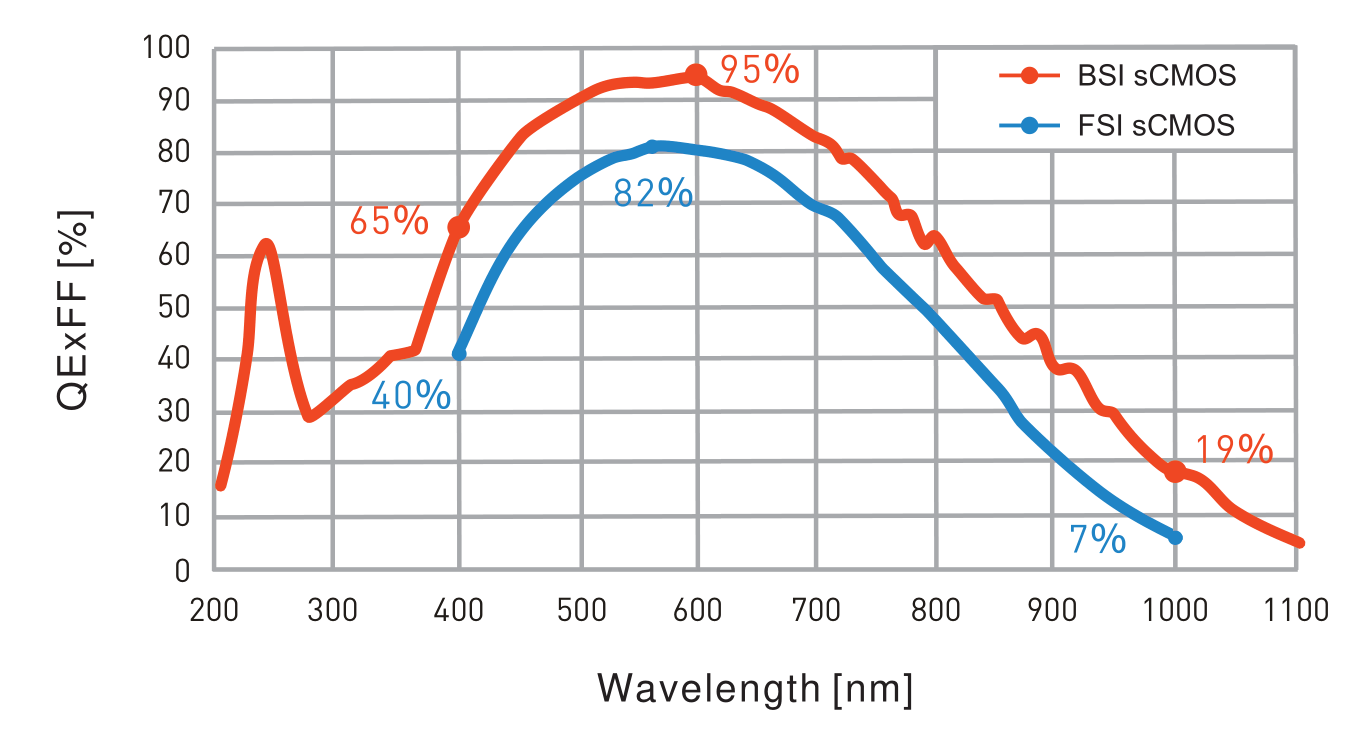The Quantum Efficiency (QE) of a sensor refers to the likelihood of photons hitting the sensor being detected in %. High QE leads to a more sensitive camera, capable of working in lower light conditions. QE is also wavelength-dependent, with the QE expressed as a single number typically referring to the peak value.
When photons strike a camera pixel, most will reach the light-sensitive area, and be detected through releasing an electron in the silicon sensor. However, some photons will be absorbed, reflected, or scattered by the materials of the camera sensor before detection can take place. The interaction between the photons and the materials of the camera sensor depends on the photon wavelength, so the likelihood of detection is wavelength dependent. This dependency is shown in the camera’s Quantum Efficiency Curve.

Example of a Quantum Efficiency curve. Red: Back-side-illuminated CMOS. Blue: Advanced Front-side-illuminated CMOS
Different camera sensors can have very different QEs depending on their design and materials. The biggest influence on QE is whether a camera’s sensor is back- or front-side illuminated. In front-side illuminated cameras, photons coming from the subject must first pass through a grid of wiring before being detected. Originally, these cameras were limited to quantum efficiencies of around 30-40%. The introduction of microlenses to focus light past the wires into the light-sensitive silicon raised this to around 70%. Modern front-illuminated cameras can reach peak QEs of around 84%. Back-illuminated cameras reverse this sensor design, with photons directly hitting a thinned light-detecting layer of silicon, without passing through wiring. These camera sensors offer higher quantum efficiencies around 95% peak, at the cost of a more intensive and expensive manufacturing process.
Quantum Efficiency will not always be a vital characteristic in your imaging application. For applications with high light levels, increased QE and sensitivity offers little advantage. However, in low light imaging, high QE can yield improved signal-to-noise-ratio and image quality, or reduced exposure times for faster imaging. But the advantages of higher quantum efficiency must also be weighed against the 30-40% increase in price of back-illuminated sensors.

 22/02/25
22/02/25







